





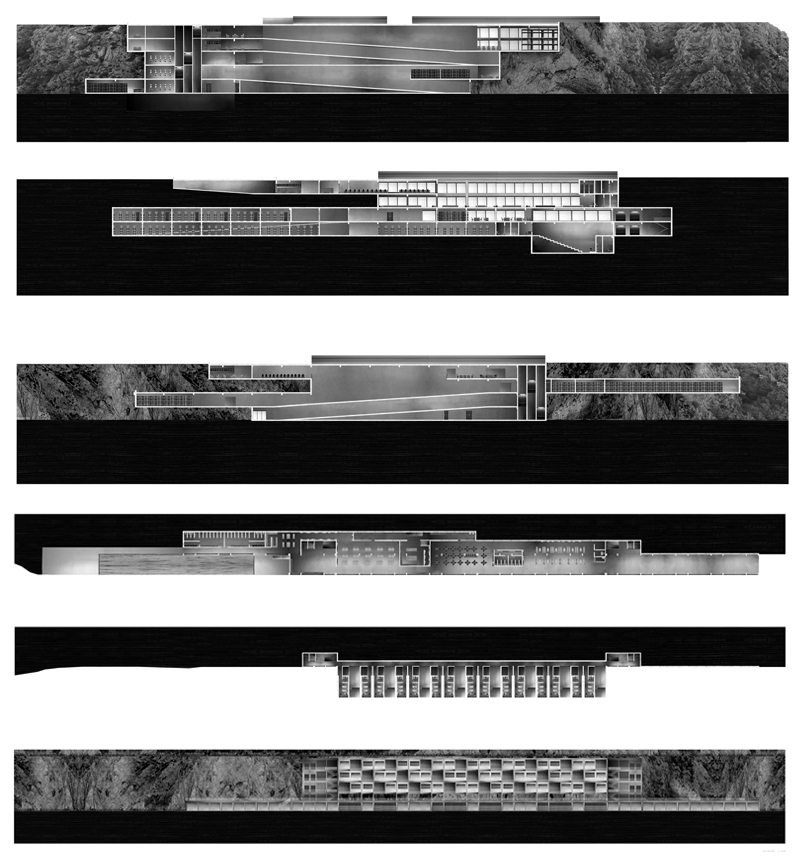

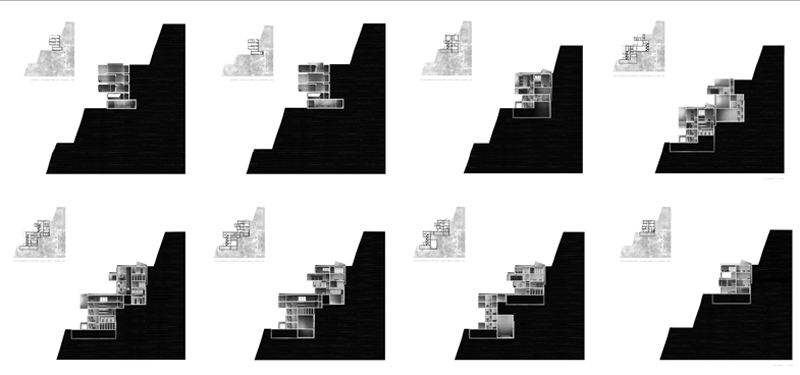

The quarry of AGET ERAKLIS is the space chosen following research among spaces with a particular morphological character. Having in mind particularity we search for places showing vigorous contrast: hypsometric interchanges, interchanges of natural elements (land, water), alteration of the in and out and the co-existence of artificial and natural ground.
The function of the AGET factory is going to be discontinued due to the environmental aggravation that it causes to the surrounding area. The quarry and its establishment are in a quest for a new function and connection with the landscape. Having in mind the reuse of the space and to counteract
the negative environmental effects which the factory caused we suggest the creation of a new local net of exchange and preservation of traditional plant variations, aiming at preserving the bio-variations of the land of Thessaly. This net is formed of units of cultivation growing along the steps of the quarry and a building foundation - Seed Bank - consisting of a building providing information to
visitors, research centre and researchers' lodging units.
The function of the seed bank is based on the protection and preservation of genetic material and the free exchange of seeds among farmers. The managing system of the seeds proceeds as follows:
- gathering of seeds
- setting in drying room (place where seeds are dried under temperature 15 C and 15% moistness)
- separation of the seeds that can be dried from those that are unsuitable.
- selection of a number of seeds of each kind in order to be studied and their ability to reproduce to be examined.
- placement of the seeds in the drying room for the final drying procedure before their storing in the cold room (-20 C) where they are kept until they are used.
- experimental cultivation of the seeds for morphological observation in order to examine their liability of infection, and later their cultivation in order to multiply and their distribution to selected farmers.
The building establishment develops upon three steps of the quarry. On the first step lays the visitors' building consisting of exhibition and information places in relation to the function of the seed bank. Access to the second step is achieved through a platform that leads to the laboratories. Here are the places for analysis and studying of the seeds and specially designed places for their preservation. The movement within the building is achieved through platforms around a small wall which bounds the development of spaces inside and outside the ground.
On the third step lay the guest rooms for the researchers. On the first level lay the facilities while on the rest the lodgings are shaped. The movement in the quarry and the access to the steps
is achieved through the formation at the road and the use of platforms. The road runs through a part
of cultivation and ends to a small wall which bounds two widened water pools, while a third one lays on a lower step of the quarry.
Supervisor: Kotionis Zissis
Reference Number: 173


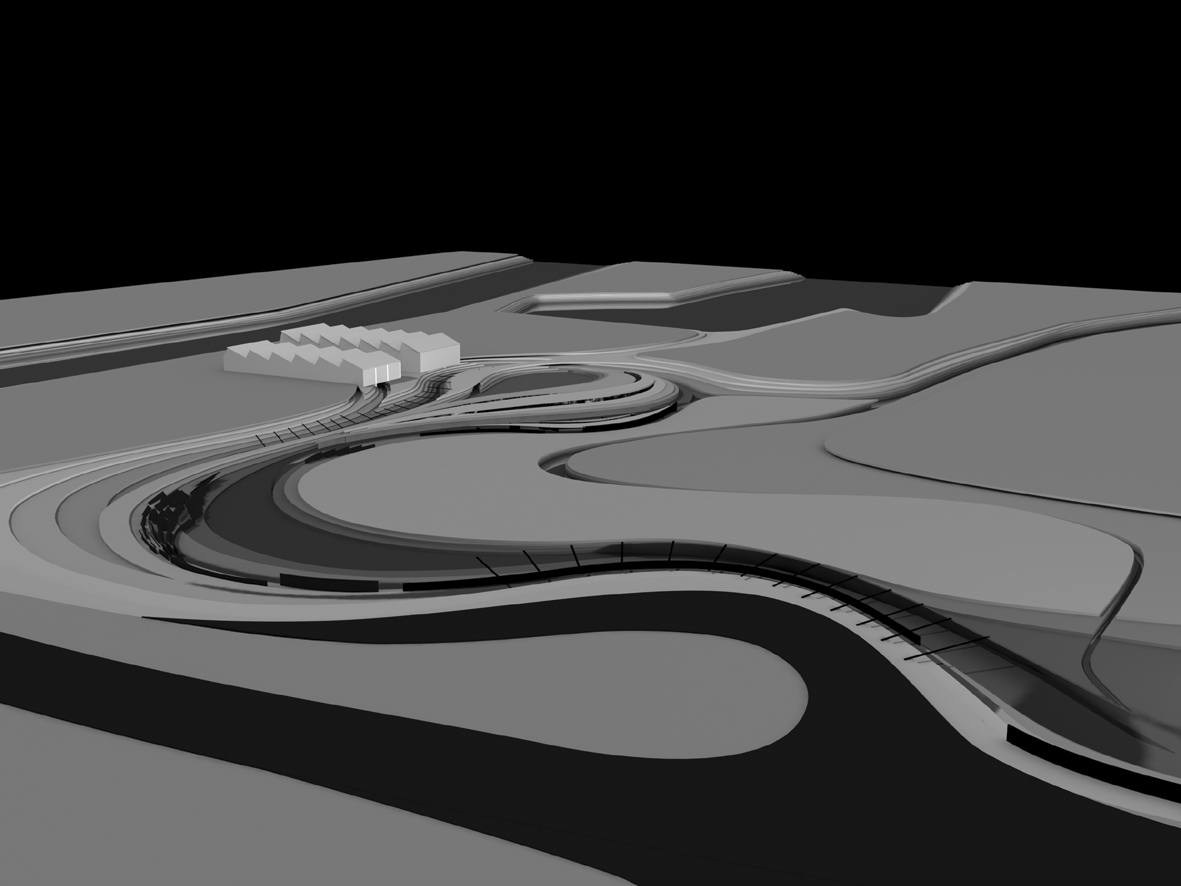



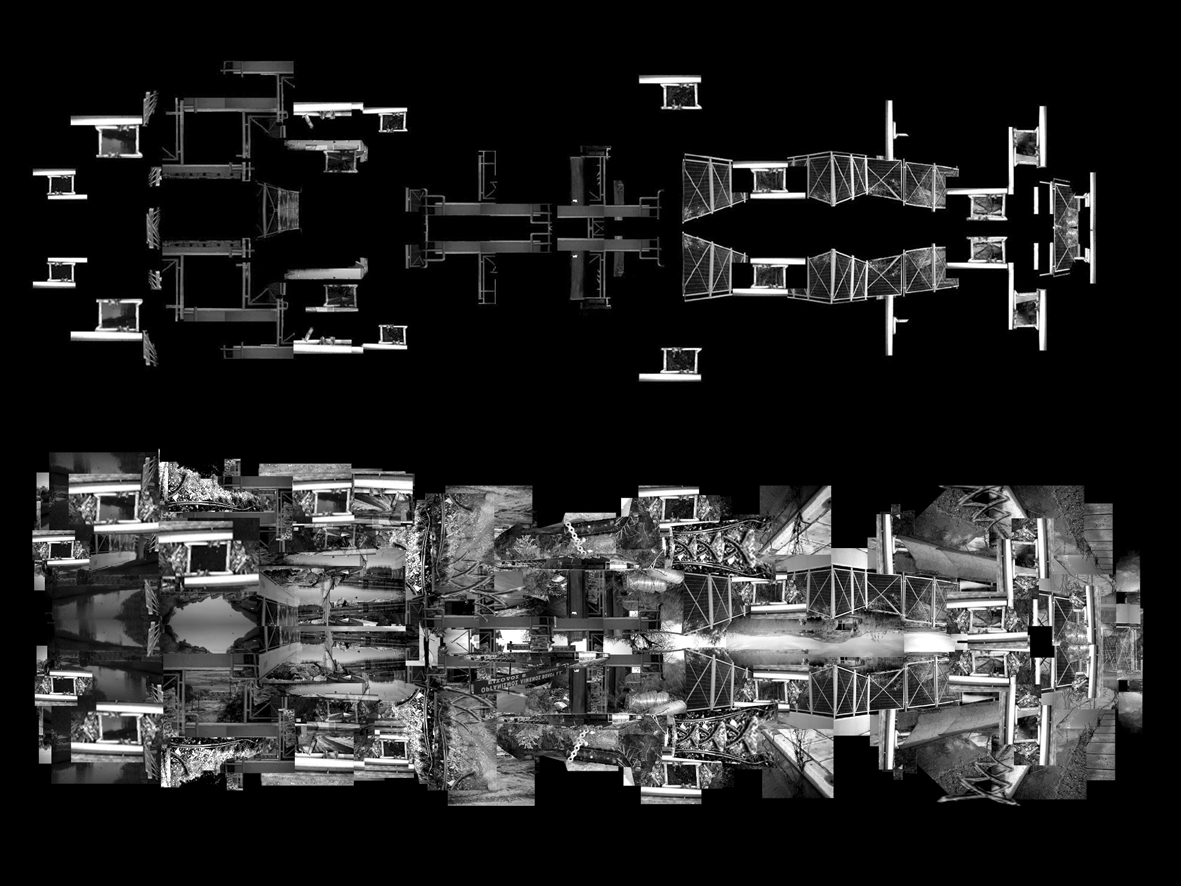

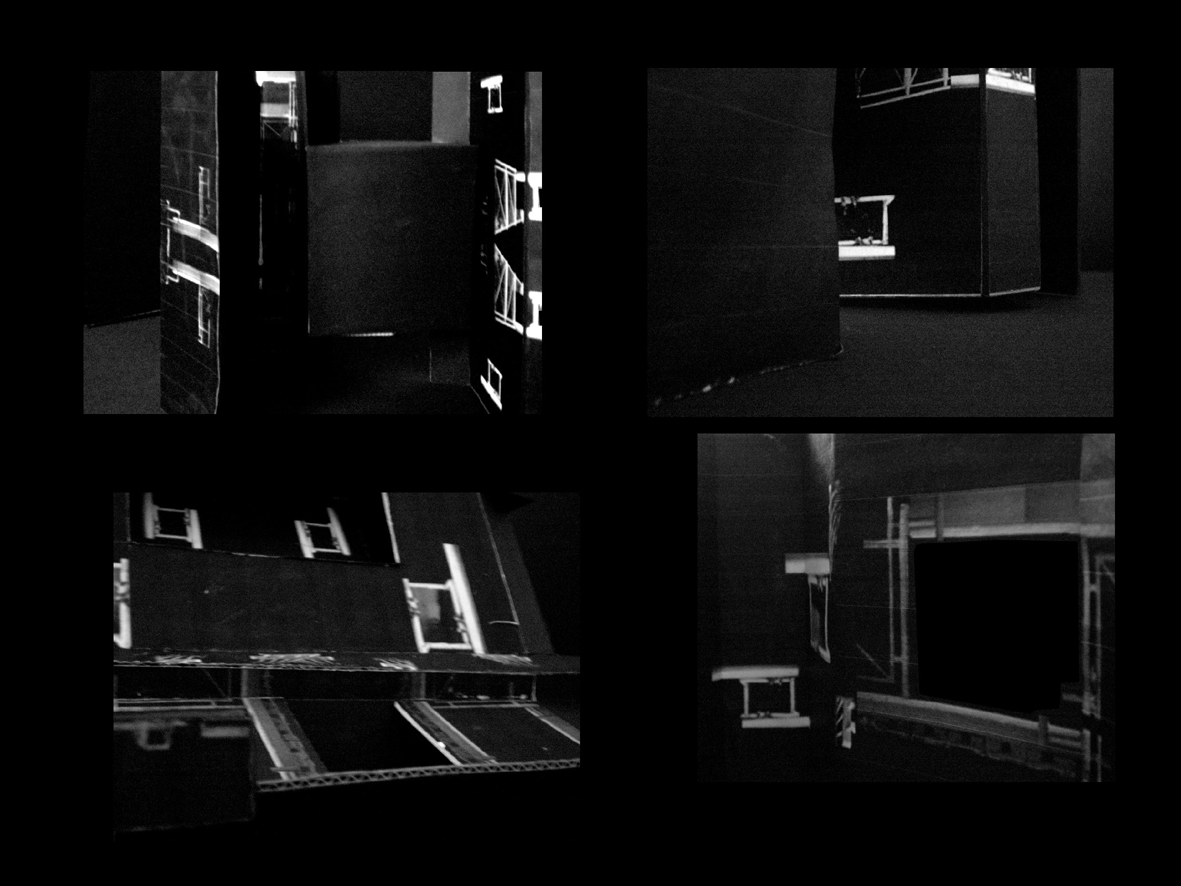



The aim of this thesis is to create an installation in the Old Slaughterhouse, a place in the outskirts of the city of Volos.
Slaughterhouses which were accommodated in two industrial buildings are now abandoned. In this place there is a small river, named Mpourmpoulithras. By this time the whole site is turned to be a fen.
The purpose of this project is to find out the reasons and ways to make this site familiar through its “uncannity” and make it again a part of the contemporary identity of city of Volos, not as a slaughterhouse but as a place that has his own history and memory.
The search is splitting in two directions. On the one hand there is the site that is analyzed in 3 different axes: memory present situation and imagination. On the other hand is human as receiver and as a carrier of embodied memories and lived experiences.
Supervisor: Gavrilou Evelyn
Reference Number: 181


At the place where the gods chose to realize weading ceremonies and festival celebrations, from the city of Volos to the northeast side of Mount Pilio, we study the necessity of the existance of the teleferik. Starting from Volos, taking advantage of the mountain's beauty and supporting its architectural heritage and the remarkable physical environment we set stations at specific points-locations.
We point at a considerable of the tourism, in the climate of a general progress of the area, and at the transporting services offered at people and at the regional commerce. We study the expansionism of the project, we analyse the advantages of its elaboration and we prescribe its livability. We set all these arguments and advantages by recalling its direct necessity of completion. With respect to the environment, the people, the life, the Mountain of Pilio becomes again alive, the first choice for explorations and visits.
Supervisors: Philippitzis Dimitris, Stylidis Iordanis
Reference Number: 184




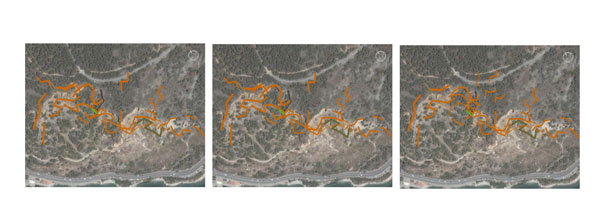

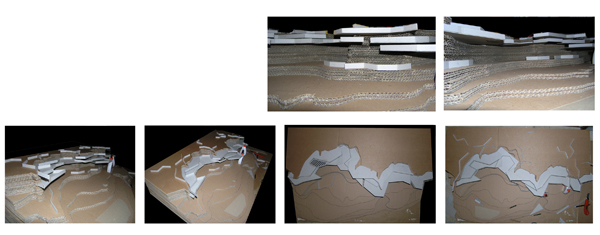

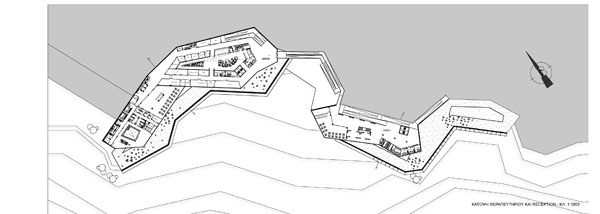



The holistic approach of building design in combination with the holistic approach of health and illness, that psychosomatic medicine suggests, were the basis of this dissertation. Its objective is to study the environmental design of a medical recovery and rehabilitation centre in the city of Volos. I am focusing on the architectural designing of its health facilities that have to satisfy the users' needs and on the other hand on the energy saving through an environmental (bioclimatic) design. My basic goal is that the environment -the spaces of the building- through their design will contribute in the "recovery" of the patients and will reflect a healthy image in their interior, by offering conditions of thermal comfort and quality natural lighting to the patients, as much as and in their exterior, by not being a burden to the environment.
Supervisors: Gavrilou Evelyn, Tsangrassoulis Aris
Reference Number: 180
.jpg)
.jpg)
The present diploma project concerns the construction of the public building of Urban Planning Service at the region of Saint John. Main aim was the design of a building, which will bring out its public character, at the outside, as much as at the inside. However, its public presence should be included smoothly in the existing round environment. Also the design of the building should correspond in the functional requirements for the better service of the public and the employees of the Urban Planning Service.
Supervisor: Triantafillidis Giorgos
Reference Number: 182


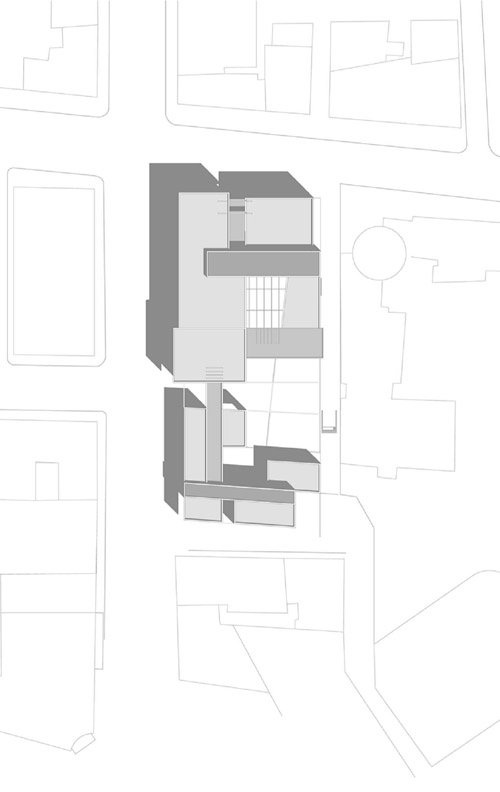

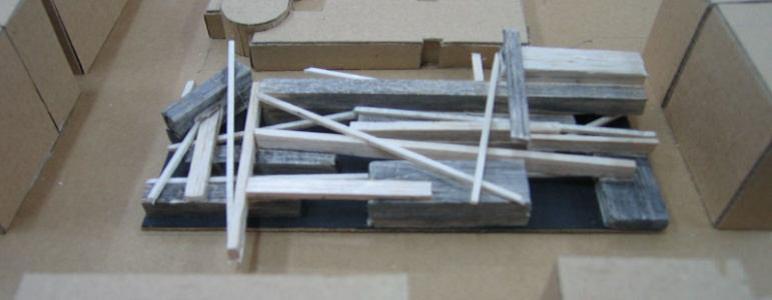



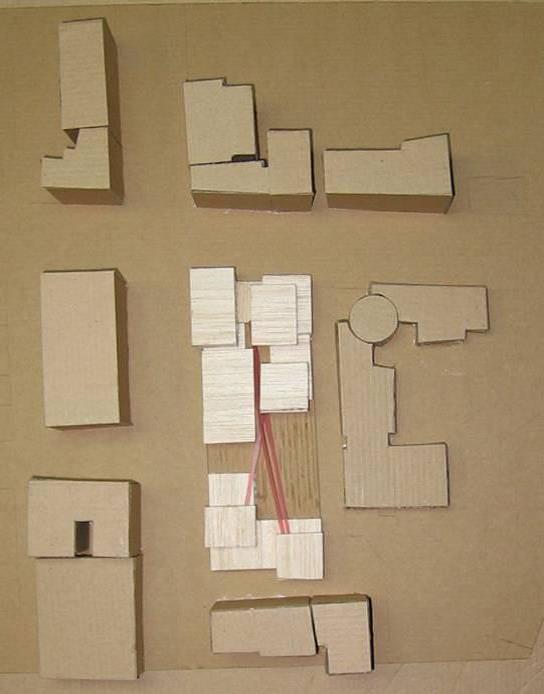

The C.C. “TEHNI” was established at July 5, 1951 in Thessaloniki. At the time, the city had only rudimentary cultural structure and development. Though the company’s activities are related to many cultural sections, it hasn’t had a permanent establishment except for the years 1960-1978. Nowadays, the part of the company in the city life is rather limited because of the lack of installations. There is a little building in Ano poli, where are the offices, a little library and a storage for the paintings of the company.
“TEHNI” has been co-operating for many years with schools all over northern Greece through cultural programs and exhibitions. In the future, the company is interested in expanding its activities related to children and young people. Considering all the above, as also the position and the condition of the building of the school next to our site, we decided to include it to the design and create a new project.
Designing a school has its own rules, of course, which we had to follow even though the school was considered as a part of a whole. As a result there are created spaces which belong to each building separately, spaces that can be used by both buildings and common spaces (mainly open spaces).
Designing the installations, we based on the fact that the company’s activities are related to different sections of culture each time. These activities are simultaneous and interdepended. These are the three main elements that characterize the company’s activities and the process of the design.
- Junction. η ένωση. Simultaneous actions in different cultural sections.
- Section. Activities that refer to the common space of two or more forms of art.
- Subtraction. Activities that refer to a specific part of a cultural field.
Main targets of the project:
1. Design of permanent installation
2. Placing the building in a site that accommodates and promotes the company’s projects.
3. Development of past activities which no longer occur (publications, concerts, thematic exhibitions).
4. Development of current activities and establishment of new activities through the collaboration with the intercultural school.
Supervisor: Papadopoulos Spiros
Reference Number: 198
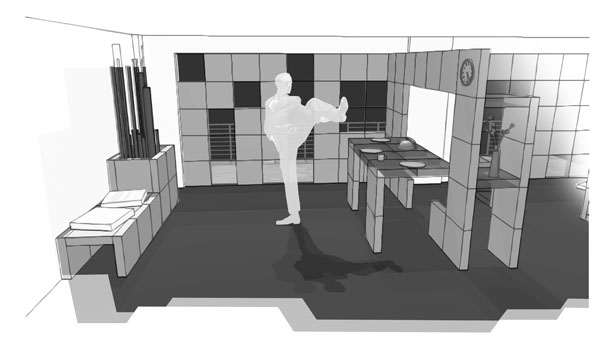

The project is about the development of a building system named ‘Meta-System’. The degree thesis is about designing a system of which all parts can be shaped and customized from any user. The intention is to produce a system of individual creation and design, where the user acts under his own stereotypes without any architectural knowledge.
The project can be separated in four sections. The first section consists of the system method, specifications, information and all its parts. The application of the system in emergency circumstances is examined in another section which deals with the design of an emergency type house, where the criteria of the project will be: the size, the ease of construction and reassemble with minimum waste and the flexibility of the design.
The use of the system in a smaller scale, such as multi-use furniture is examined in the form of an experiment. Ten different people are asked to design their own construction, using the system, based to their own needs. The system will have the form of a product, consisted of 40 pieces – which occupy 1³ meter in a folder. The results could confirm the success of the system, for an individual design without any architectural effect.
The last section of the project is about the use of the system in housing prefabrication, involving the design of two standard houses, of one or two bedrooms each.
Supervisor: Vyzoviti Sophia
Reference Number: 159


